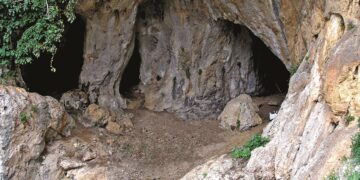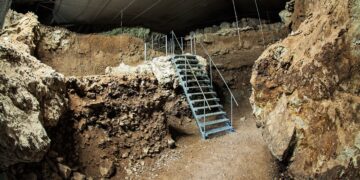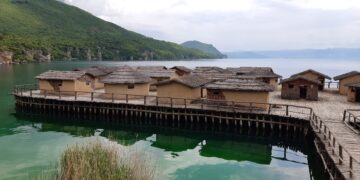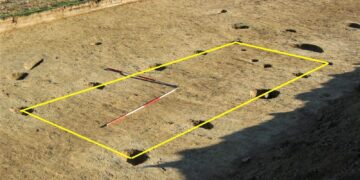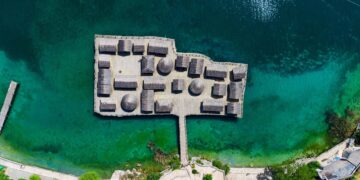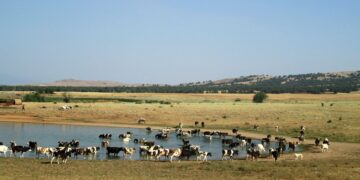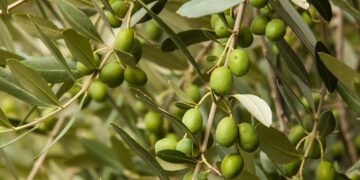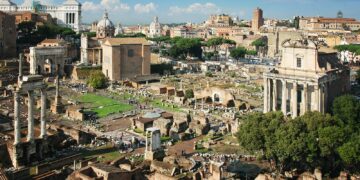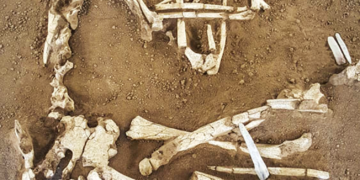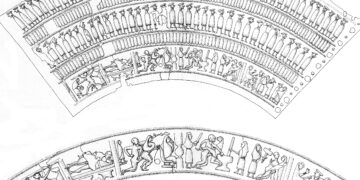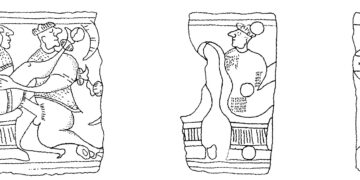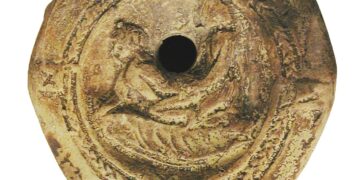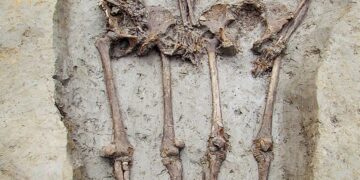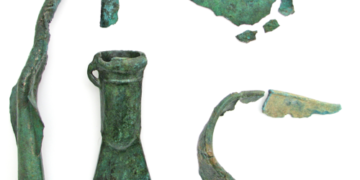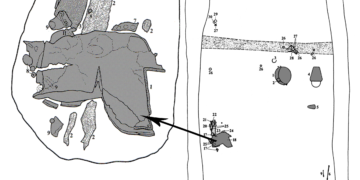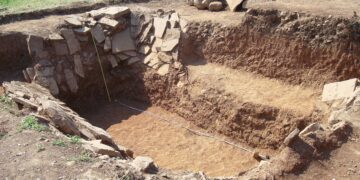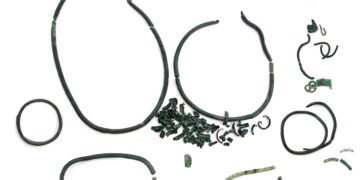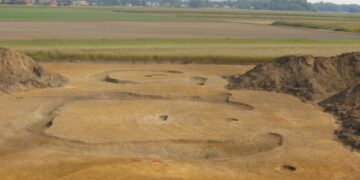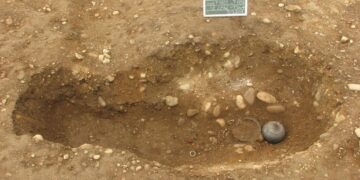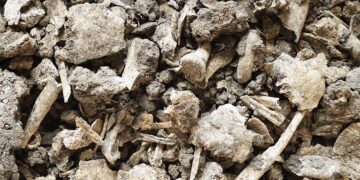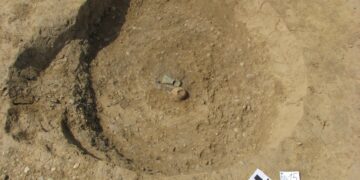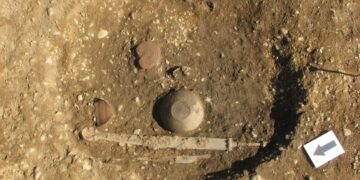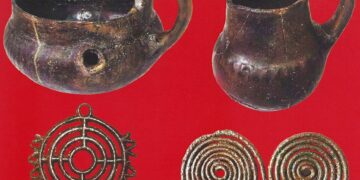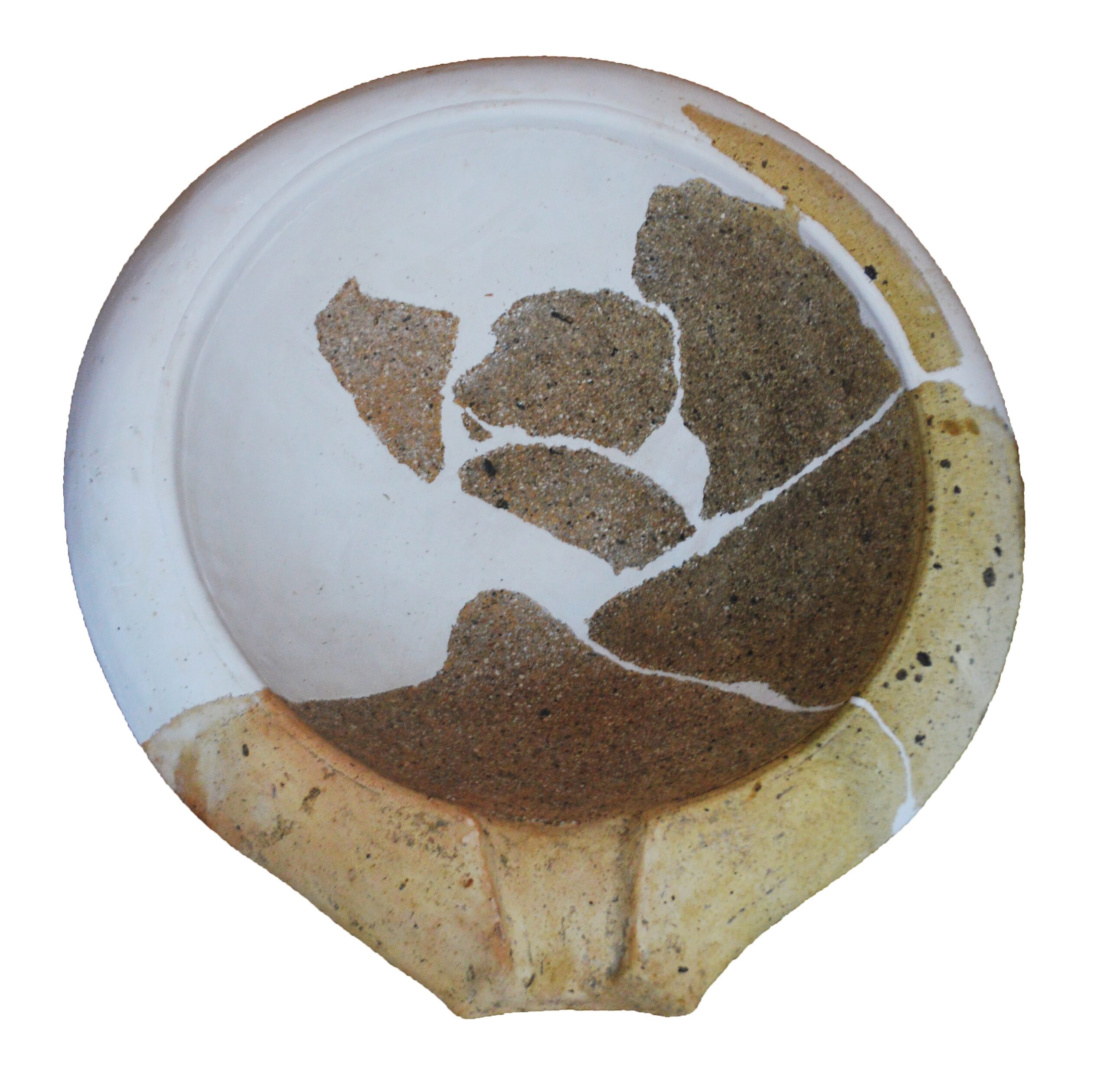The ceramic Roman mortarium is thick and heavy and has a broad rim to enable the cook to put some energy into grinding and bruising without fear of breakage. A section of the rim has been adapted to form a flat spout to enable the prepared herbs or spices to be poured out of the mortarium into another smaller container or jar. The mortarium was hand thrown, wide and deep enough for herbs and spices to be mixed energetically without spilling out. A pestle, a hand-held club-shaped tool, was used to grind and rub the herbs and spices around the bowl. Its inside is rough in surface texture to help the grinding process. This surface is created by using tiny sharp pieces of broken pot, which were pressed onto the wet clay before firing.
The Romans used lots of herbs and spices in their cooking, including cumin, coriander, sage, nutmeg, thyme, pepper and ginger. Fresh herbs are mainly leaves and twigs, and spices are hard, dry root or nut-like forms. In order to prepare these herbs and spices for cooking, the Romans had to break them down so that their flavours could be absorbed into the food. Spices have to be ground into a fine dust-like substance, and herbs bruised and crushed to release their flavours and scents. And it was mortarii, discovered in numerous households across Europe, that document the process of Romanization, the process that did not include only the spread of Roman material culture and trade with agricultural products, but also the diffusion of food-preparing technologies and most important the adoption of Mediterranean tastes.

